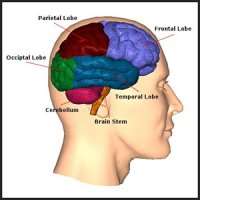FOOTWAGEN...Part 1

Engine system... diffuse... modulated via the central nervous system (CNS)...specifically motor nerves and a rather reflexive portion called the autonomic nervous system. Really a hybrid engine capable of using sugar, protein or fat as fuel.
Suspension system... rest of body minus the lower limbs...even upper limbs should have been excluded had Homo sapiens were to walk on "all fours"...
Chassis system... not much different from the entire suspension system...as the,
Steering and braking systems are not discrete... but rather diffuse...and modulated by the CNS. Much depends on reflexes and the rest, on basic common sense...
Front axle... pectoral girdle.
Back axle... pelvic girdle.
But only back axle is used in locomotion... under normal circumstances when humans walk or run...
When we crawl however, a situation akin to other animals that crawl, our suspension system, chassis system, front and back axles can easily fit into vehicular equivalents.
Energy conversion...from chemical to kinetic...just like in motor vehicles. Organic materials called food being the primary fuels in humans whereas products derived from fossil fuels are the primary energy sources in motor vehicles.
Movement module...linear but pulsatile...as distinct from motor vehicles where motion is radial or circular in motor vehicles but there is translation into linear motion as soon the vehicle moves forwards or backwards.
We might just impune that reflexive abrupt cessation of movement can be likened to the normal brakes of motor vehicles.... while controlled stoppages in motion are the human equivalents of the automatic braking systems (ABS) in motor vehicles.
Lubrication of moving parts... done by synovial fluid housed in synovial membranes in joint cavities.... They are interposed or juxtaposed in between cartilage-covered ends of two or more bones as they come together at a joint.
Synovial assemblies are however mainly shock absorbers.
Similar sacs called bursae (sing. bursa) are strategically located in places where bone comes into direct contact with skin. Muscle groups by anatomical proximity that perform similar functions are usually bound together in sacks called fascia. Fascial bandaging also keeps muscles in place and prevents them from splaying. There is a thin film of lubricant in between fascias (fasciae) that prevents friction between the muscle bundles.
Sensors are our sensory nerves placed mostly in our skin. Labelled simply as nerve endings in elementary biology, they convey information to our brain via the spinal cord...through the spinothalamic tracts. Some, limited to the reflex arcs, do not have to reach our cerebral centres for us to react....to pain, heat or pressure...
For parallels to adjustments to light emanating from vehicular headlamps, we rely on the rods in our retinas (retinae).
Lacrymal fluid keeps our eyes healthy, moist and clear...human equivalent of lamp and windshield wipers.
Our horns are our mouths and footsteps...or footfalls.
For brake lights and pointers, we may just have to rely on basic common sense!
Air filtering is by mucus and hairs that line our respiratory passages right from our nostrils down to lower parts.
And gaskets? Packings and seals abound in the human body.
Dr Tosin Akindele is a medical practitioner.
POST SCRIPT
Like the concept of front and back axles, that of front and rear wheels is difficult to define in human locomotion as we walk only on our hind limbs under normal circumstances.
And when we swim, all limbs are used with our forelimbs taking the lead.
But we can't fly yet, can we?
